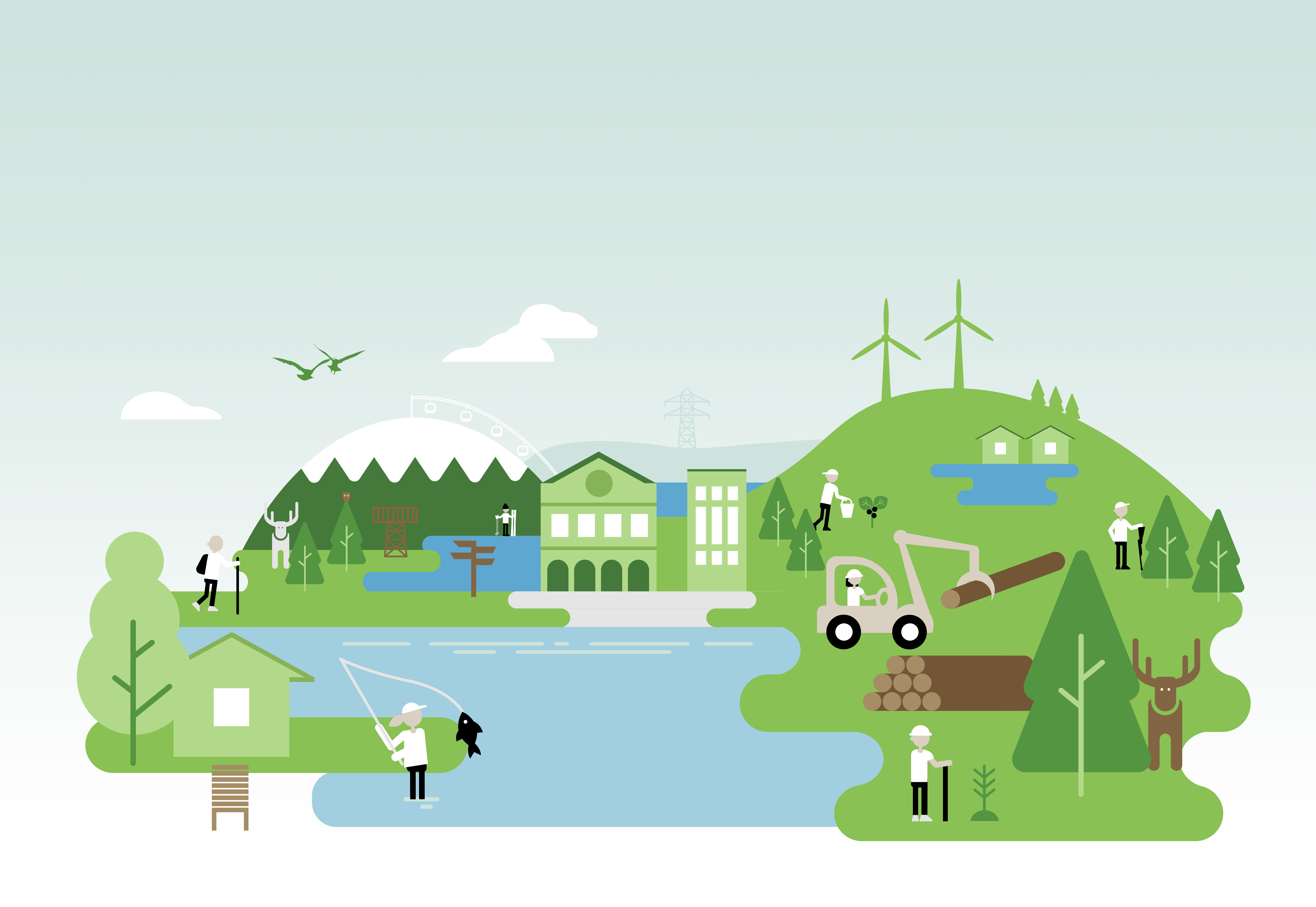Metsähallitus and the new era of governing with design

The 160-year-old Metsähallitus operated at Erottaja 2 from 1924 to 1991. Metsähallitus administrates over 12 million hectares of state-owned land and water areas. With a main task of managing and using these areas in a way that benefits the Finnish society and its residents, how do you keep everyone happy? And what does design have to do with it?
Metsähallitus is the largest governing body in Finland administering over 12 million hectares of state-owned land and water areas. It runs as an enterprise while also fulfilling a range of public administration duties. With a main task of managing and using these areas in a way that benefits the Finnish society and its residents, how do you keep everyone happy? And what does design have to do with it?
Natural resource planning, or NRP, involves solving seriously complex problems. While it essentially comes down to managing the way in which natural landscapes and people interact, it also deals with issues such as biodiversity, principles of conservation, sustainability and eventually, the way we build into the future. All the while bringing together stakeholders with a varied spectrum of interests. How does one cooperatively approach a large group consisting of representatives for agriculture, mining, tourism, fisheries and forestry, joint only by the common interest of utilising an area but with a wildly different view of doing so?
Back in the day you didn’t. According to Maria Sundman, Project Manager for the NRP in the Lapland region, planning has previously meant that industries operate as areas of responsibility, rather than a joint unit. Each area would come up with its own plan of action which included measures, operations and policies. Forestry for example, would present its own area-specific course of conduct for logging where as property developers, in turn, concurred with a model for city planning.
 Good in theory? Possibly. Works in reality? Hardly. Which is why, according to Sundman, new times are ahead for Metsähallitus. The enterprise is now being rebuilt with a strong strategic backbone. And a common vision – all is done together.
Good in theory? Possibly. Works in reality? Hardly. Which is why, according to Sundman, new times are ahead for Metsähallitus. The enterprise is now being rebuilt with a strong strategic backbone. And a common vision – all is done together.
“Metsähallitus has always been committed to finding new ways of interacting with its stakeholders. This now means we are operating more and more according to the principles of inclusive design”, says Kristiina Vuopala, Account Manager for the enterprise. For Metsähallitus this means increasing its efforts in understanding the user diversity and engaging as many people as possible in the decision-making process.
Working together for the common good
The variation in needs and aspirations of stakeholders has been mined with the use of service design, social media and web-based tools in order to find out the answer to a simple question: how would you like to see an area being used? Or alternatively, what would you not like to see.
“For the newly established natural resource plan in the Lapland region we gathered over 40 stakeholder groups to joint discussions. These consisted of anyone with an interest in the regional area. We opened a website for people to mark their favourite areas, had discussions on social media and even utilised old maps where users could indicate places of special interest”, confirms Vuopala.
The intense discussions carried well over a six month period, resulting in a new five year plan for the region. A plan that guidelines the use of all state-owned land in Eastern and Western Lapland, excluding the Sámi homeland.
 This is where design became important. While natural resource planning for Metsähallitus means supervising the use of land and water areas, it basically boils down to managing people’s expectations. The enterprise is owned by the state, but carries a huge responsibility towards the people. Forests have always remained close to the hearts of the Finns. All planning for the use of these areas must therefore be done systematically, timely and tactfully, in order to avoid future conflict.
This is where design became important. While natural resource planning for Metsähallitus means supervising the use of land and water areas, it basically boils down to managing people’s expectations. The enterprise is owned by the state, but carries a huge responsibility towards the people. Forests have always remained close to the hearts of the Finns. All planning for the use of these areas must therefore be done systematically, timely and tactfully, in order to avoid future conflict.
The decisions throughout times have been right, emphasises Vuopala. Our forests have not disappeared, but still remain as the basis of our well-being while providing us with commodities. Living in these times of change it remains increasingly important for us to take care of them.

“This is not quarterly economics we are talking here. What we have at hand is a slow ecosystem that requires long term planning and a deep understanding of both the principles of ecology and expectations. Here at Metsähallitus we are taking care of something that belongs to us all. The forest we all hold so dear! We are not doing this for ourselves but for the common good”, reminds Vuopala.
The 160-year-old Metsähallitus operated at Erottaja 2 from 1924 to 1991. Metsähallitus is a part of Helsinki Design Week on Erottaja 2. The exhibition features an installation of handmade cubes filled with people’s hopes and dreams for the future. The installation explores new ways of interacting as a base for finding solutions for a sustainable future.